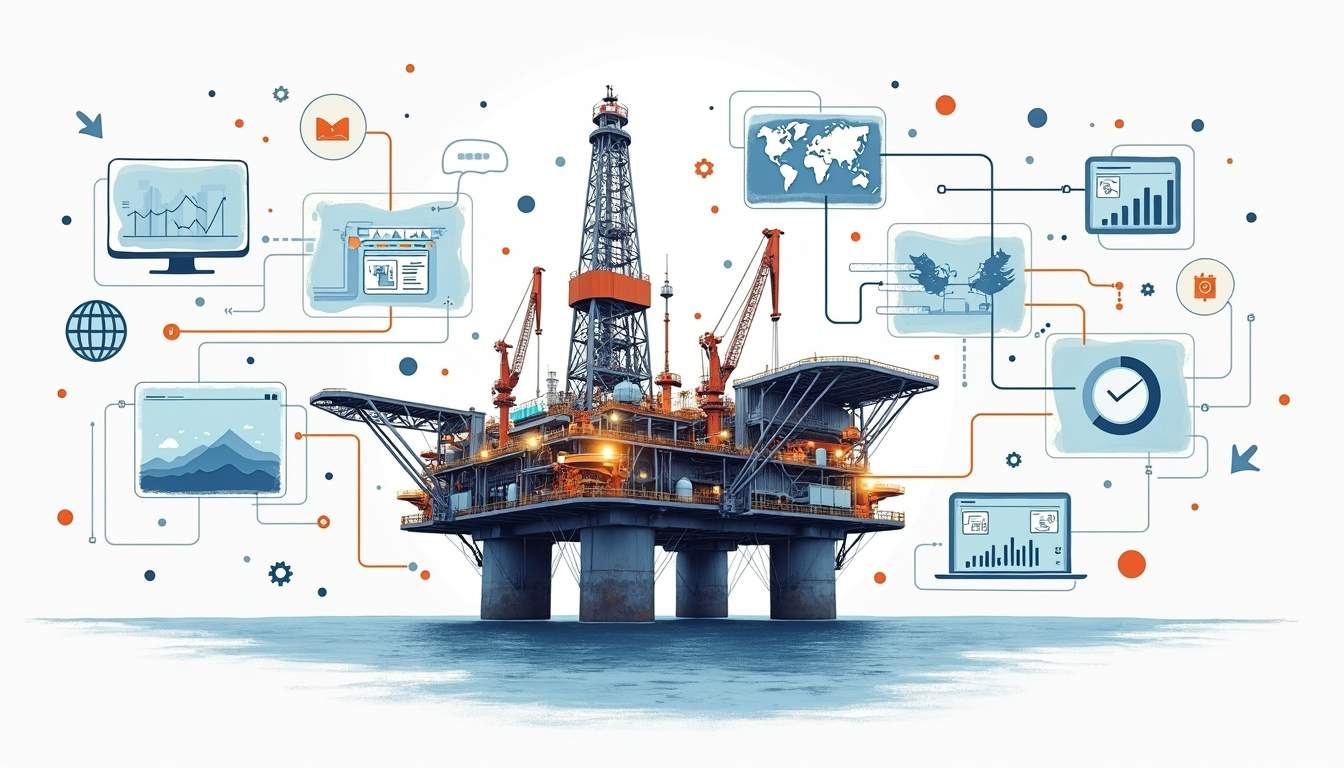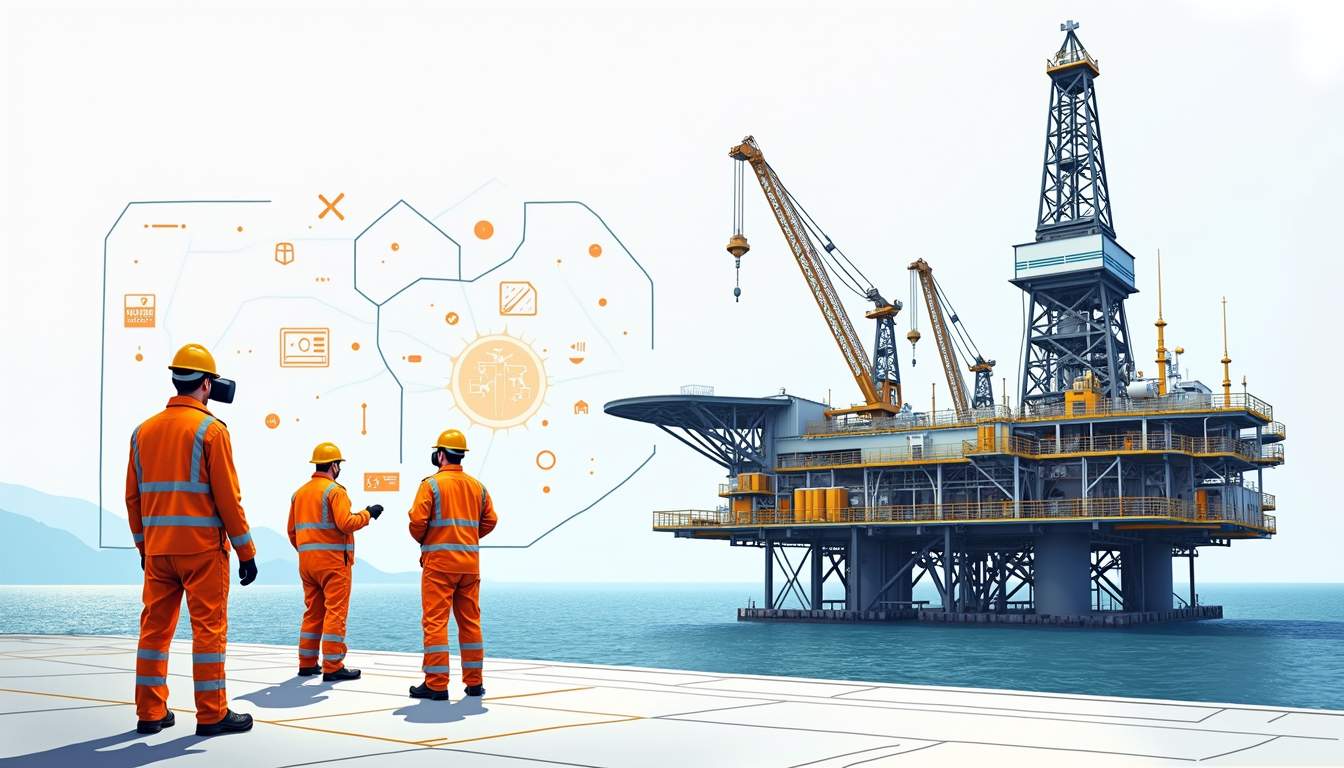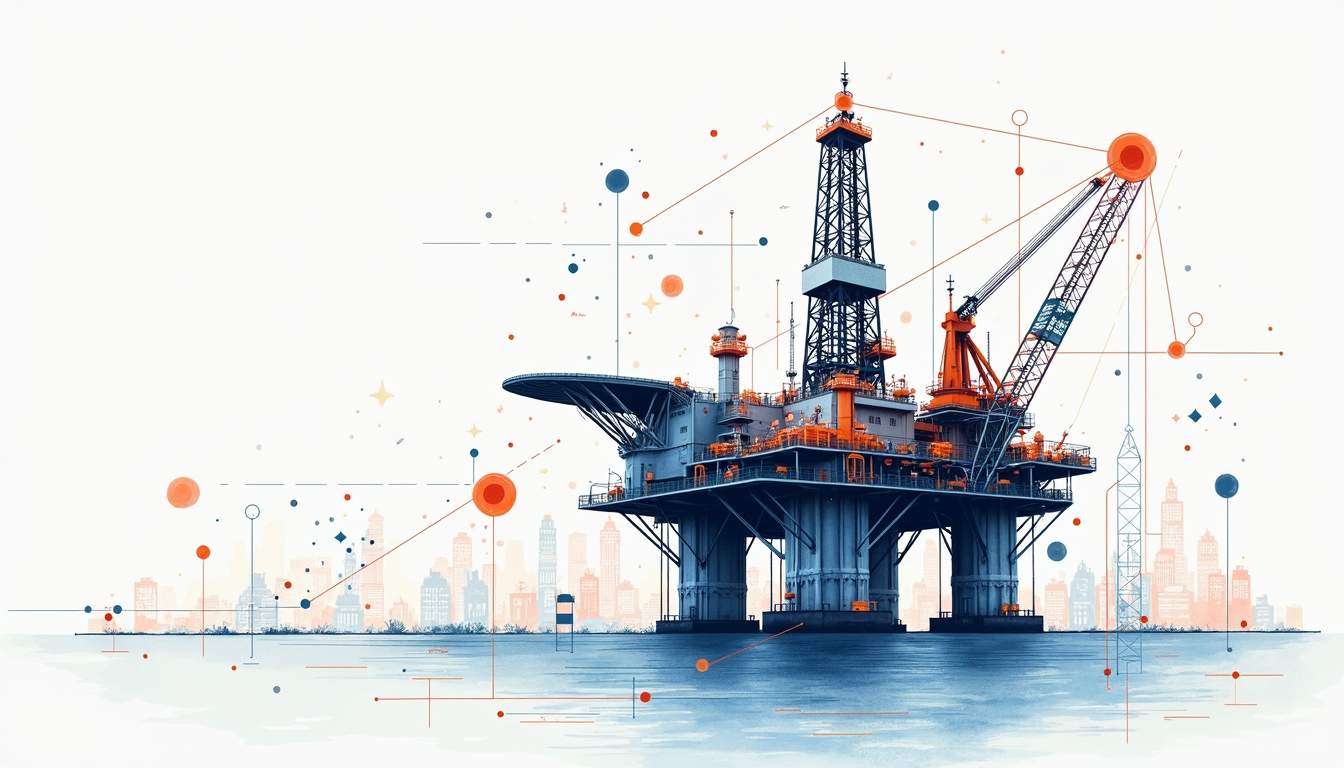Importance of AR & VR in Oil & Gas
The oil and gas industry faces unique challenges, including complex operational environments and the need for highly specialized skills. AR and VR technologies provide innovative solutions that address these challenges head-on. These immersive technologies enable companies to simulate real-world scenarios, ensuring that employees are better prepared for the field.
Moreover, the importance of AR and VR extends beyond training. They facilitate collaboration among teams, regardless of geographical barriers, allowing for real-time problem-solving and decision-making. This integration of technology not only enhances productivity but also fosters a culture of continuous learning and improvement.
Enhancing Training and Collaboration
Training in the oil and gas sector can be resource-intensive, often requiring significant time and financial investment. AR and VR streamline this process by offering immersive training experiences that replicate real-world conditions. Trainees can engage with virtual environments that mimic actual operations, leading to a deeper understanding of their roles.
Collaboration is equally enhanced through these technologies. Teams can work together in virtual spaces, sharing insights and expertise without the constraints of physical location. This collaborative approach not only saves time but also encourages innovation as diverse teams can come together to solve complex problems.
Meeting Industry-Specific Challenges
Every industry has its specific challenges, and the oil and gas sector is no different. From safety concerns to the need for precise data analysis, AR and VR provide tailored solutions. For instance, VR can simulate hazardous environments, allowing workers to practice safety protocols in a controlled setting. This preparation is crucial for minimizing risks in the field.
Additionally, AR can overlay critical information onto the physical environment, providing workers with real-time data that enhances decision-making. This capability is particularly valuable in high-pressure situations where every second counts.
Overview of AR & VR Solutions
As AR and VR technologies continue to evolve, a variety of solutions have emerged that cater specifically to the oil and gas industry. These solutions are designed to improve efficiency, safety, and collaboration across various operational facets.

From digital twins to no-code training development, the possibilities are vast. Companies are increasingly adopting these technologies to stay competitive and meet the demands of a rapidly changing market.
Accelerated Digital Twin Development
Digital twins—virtual replicas of physical assets—are revolutionizing how companies manage their operations. In the oil and gas sector, digital twins allow for real-time monitoring and analysis of equipment and processes. This capability enables predictive maintenance, reducing downtime and operational costs.
By integrating AR and VR into digital twin development, organizations can visualize complex data in an intuitive manner. This visualization aids in identifying potential issues before they escalate, ultimately enhancing overall efficiency.
Instant Collaborative Experiences Across Devices
Collaboration is essential in the oil and gas industry, and AR and VR make it easier than ever. These technologies provide instant access to collaborative experiences across various devices, ensuring that team members can connect and share insights regardless of their location.
This flexibility is particularly beneficial for remote teams, allowing them to engage in real-time discussions and problem-solving sessions. The ability to visualize data and scenarios in a shared virtual space fosters a sense of teamwork and enhances communication.
No-Code Training Development
One of the most significant barriers to adopting new training technologies is the complexity of development. However, no-code training development platforms are changing the game. These platforms allow subject matter experts to create immersive training experiences without needing extensive programming knowledge.
This democratization of technology means that companies can quickly develop and deploy training modules tailored to their specific needs. As a result, organizations can keep pace with industry demands and ensure that their workforce is always equipped with the necessary skills.
VR & AR in Workforce Training
Workforce training is a critical component of the oil and gas industry, where safety and efficiency are paramount. VR and AR offer innovative training methods that engage employees and enhance learning outcomes.
By utilizing immersive technologies, companies can create realistic training environments that mimic actual conditions. This experiential learning approach not only makes training more engaging but also improves knowledge retention among trainees.

Benefits of Immersive Learning Techniques
Immersive learning techniques, such as those offered by VR and AR, have been shown to significantly enhance the training experience. These methods allow trainees to practice skills in a safe environment, reducing the risk of accidents during on-the-job training.
Furthermore, immersive learning promotes active participation, leading to better engagement and understanding. Trainees are more likely to remember what they have learned when they can interact with the material in a meaningful way.
Tailored Training for Diverse Roles
The oil and gas sector encompasses a wide range of roles, each with unique training requirements. AR and VR technologies enable organizations to develop tailored training programs that address the specific needs of different job functions.
This customization ensures that employees receive relevant training, equipping them with the skills necessary to excel in their roles. Whether it’s drilling, safety protocols, or equipment operation, immersive training can be designed to meet the demands of each position.
Key Advantages of VR & AR Training
The integration of VR and AR into workforce training offers numerous advantages that can significantly impact an organization’s bottom line. These technologies not only enhance training effectiveness but also contribute to overall operational efficiency.
By investing in immersive training solutions, companies can prepare their workforce for the challenges of the oil and gas industry while also promoting a culture of safety and continuous improvement.
Enhanced Trainee Proficiency and Retention
One of the most compelling benefits of VR and AR training is the enhancement of trainee proficiency. By engaging employees in realistic scenarios, these technologies help them develop the skills needed to perform their jobs effectively.
Moreover, the immersive nature of VR and AR leads to better retention of information. Trainees are more likely to remember what they have learned, which translates into improved performance in the field.
Cost-Effective Training Solutions
While the initial investment in VR and AR technologies may seem significant, the long-term cost savings are substantial. By reducing the need for physical training environments and minimizing downtime, companies can achieve a higher return on investment.
Additionally, the ability to train employees remotely cuts travel and accommodation costs, making VR and AR training a cost-effective solution for organizations in the oil and gas sector.
Improved Workplace Safety Measures
Safety is a top priority in the oil and gas industry, and VR and AR training play a crucial role in enhancing workplace safety measures. By simulating hazardous situations, employees can practice safety protocols without the risk of real-world consequences.
This proactive approach to training not only prepares employees for emergencies but also fosters a culture of safety awareness within the organization.
Remote Collaboration with AR & VR
As the oil and gas industry becomes increasingly globalized, remote collaboration is more important than ever. AR and VR technologies facilitate seamless communication and collaboration among teams, regardless of their physical location.
These tools enable experts to provide guidance and support in real-time, ensuring that teams can address challenges quickly and efficiently.
Facilitating Access to Expertise
AR and VR technologies break down geographical barriers, allowing teams to tap into expertise from around the world. This access to specialized knowledge is invaluable in the oil and gas sector, where complex problems often require input from multiple disciplines.
By leveraging remote collaboration tools, organizations can ensure that they have the right expertise at their fingertips, leading to better decision-making and problem-solving.
Data-Driven Insights for Performance
Integrating AR and VR with data analytics provides valuable insights that can enhance performance. By visualizing data in real-time, teams can make informed decisions that drive operational efficiency.
This data-driven approach not only improves performance but also fosters a culture of continuous improvement, as teams can identify areas for optimization and implement changes accordingly.
Collaboration Benefits in Oil & Gas
The collaboration benefits offered by AR and VR technologies are particularly significant in the oil and gas industry. These tools streamline processes and enhance communication, ultimately leading to improved outcomes.
As teams work together more effectively, they can address challenges more efficiently, resulting in faster project completion and reduced costs.
Streamlined Prototyping Processes
Prototyping is a crucial aspect of the oil and gas industry, and AR and VR technologies streamline this process. By creating virtual prototypes, teams can test and refine designs before moving to physical production.
This approach reduces the time and resources required for prototyping, allowing companies to bring products to market more quickly.
Cost Reductions in Team Collaboration
Effective collaboration leads to significant cost reductions in the oil and gas sector. By utilizing AR and VR technologies, teams can communicate more efficiently, reducing the need for travel and in-person meetings.
This cost-effective approach not only saves money but also allows teams to focus on what matters most—solving complex challenges and driving innovation.
Faster, Informed Decision-Making
In the fast-paced oil and gas industry, timely decision-making is crucial. AR and VR technologies provide teams with the tools they need to make informed decisions quickly.
By visualizing data and collaborating in real-time, teams can assess situations more effectively and implement solutions that drive operational success.
Sustainability Through AR & VR
As the oil and gas industry faces increasing pressure to adopt sustainable practices, AR and VR technologies offer valuable solutions. These tools can help organizations reduce their environmental impact while promoting responsible resource management.
By integrating sustainability into their operations, companies can not only meet regulatory requirements but also enhance their reputation among stakeholders.
Reducing Environmental Impact
AR and VR technologies can play a significant role in reducing the environmental impact of oil and gas operations. By simulating various scenarios, companies can identify potential environmental risks and develop strategies to mitigate them.
This proactive approach not only protects the environment but also ensures compliance with regulations, ultimately benefiting both the company and the community.
Supporting Sustainable Practices
Incorporating AR and VR into training and operational processes can support sustainable practices within the oil and gas industry. These technologies promote awareness of environmental issues and encourage employees to adopt eco-friendly behaviors.
By fostering a culture of sustainability, companies can contribute to a healthier planet while also enhancing their operational efficiency.
Compatibility and Integration Challenges
Despite the numerous benefits of AR and VR technologies, organizations may face compatibility and integration challenges. Ensuring that these technologies work seamlessly with existing systems is crucial for successful implementation.

Companies must invest time and resources into addressing these challenges to fully leverage the potential of AR and VR in their operations. By doing so, they can create a more efficient and effective workforce that is prepared for the future of the oil and gas industry.
Discover the Future of Oil & Gas with SynergyXR
Embrace the cutting-edge of operational efficiency and training in the oil and gas industry with SynergyXR. Our no-code XR platform is tailored for enterprise companies like yours, seeking to innovate without the complexity of coding. SynergyXR enables you to build immersive learning programs that scale, enhancing safety, collaboration, and sustainability in your operations. Join the ranks of industry leaders who are already transforming their processes with our secure, cloud-based XR solutions. Ready to revolutionize your workforce training and operational efficiency? Book a demo today and step into the future with SynergyXR.


